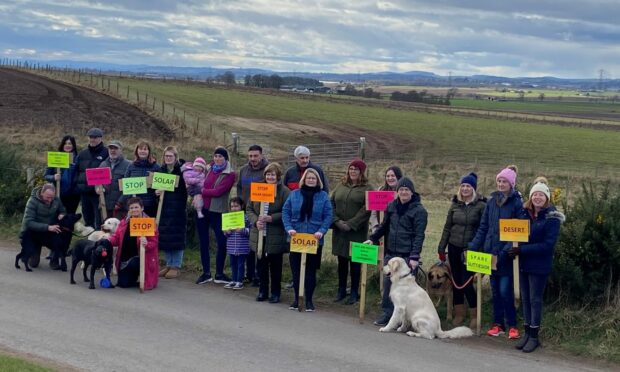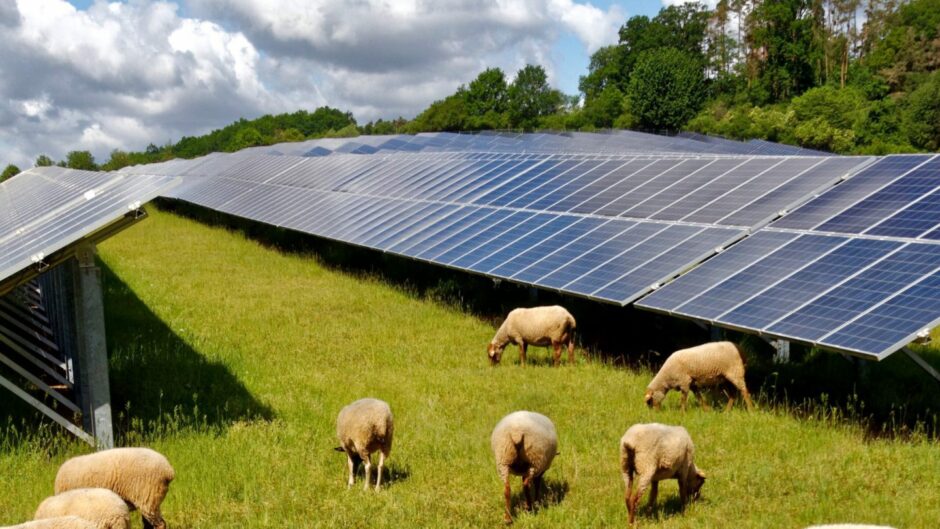Could a glut of solar farm proposals like we are seeing in Angus lead to more empty shelves in our supermarkets?
Farmers and environmental campaigners don’t seem to think so.
But members of local action group SPARE Suttieside say turning 55 hectares of farmland near Forfar into a solar development is a bad idea.
We live in a time when basic provisions are becoming more expensive and, as in the case of the recent national tomato shortage, more difficult to source.
So why would we want to put solar panels on valuable agricultural land at a time when we need it most?
The campaigners
Susan Oliphant of SPARE Suttieside is concerned about the cumulative impact of solar developments in Angus.
Developments in the pipeline across the region, if given the go-ahead, would cover 900 hectares. That’s an area larger than Arbroath.
Suttieside could provide 8,000 homes with power. But Susan says this will come at a cost.
“If we take out 55 hectares of land that is used for producing food…then where are they going to produce it?
“Food security is one of the things that we feel quite strongly about.
“That’s a lot of land. It’s not necessarily all prime agricultural land, but it’s still a lot of solar farms.
“They have to take up so much land, but they still produce relatively little energy.”
Scotland’s planning minister Tom Arthur says “bold action” is needed to tackle the climate emergency.
He hails the country’s National Planning Framework 4 as a “turning point” for planning, “making clear our support for all forms of renewable, low-carbon and zero emission technologies, including solar arrays”.
But he adds that impact on prime agricultural land is a key consideration in decision making.
“We also acknowledge the need to produce more of our own food, more sustainably.”
The farmers
Richard Murray is director of Murray Planning Associates, who are acting on behalf of Suttieside developer Relay Suttieside.
He says farmers face no choice but to diversify to keep their businesses profitable.
And he says productive farmland and solar arrays can live alongside each other.
“The proposed site was specifically selected as it is split over two farms which ensures that only a small proportion of each of the farmer’s land holding is used for solar.
“Even with the solar farm built, both farmers will continue to work the majority of their land with the reliable income received from the solar farm allowing them to stay profitable.”
In November last year, the National Farmers Union (NFUS) Scotland wrote to Scottish Ministers calling on them to make it easier for farmers to benefit from solar.
This does not relate to major schemes like Suttieside or Berryhill, but more minor solar arrays that would provide the farmers with enough electricity for their own use.
The farmers’ union wants to see solar panels with capacities of five megawatts and under to go ahead without the need for planning permission.
A truly green solution?
Meanwhile, environmental movement Greenpeace says solar power generation and food production can be the perfect companions.
Greenpeace has highlighted projects in other parts of the world. These include fruit and vegetables being grown among solar canopies.
Solar schemes can also live alongside free range chickens, grazing sheep and even cattle.
Richard Murray says the number of panels proposed at Suttieside has been scaled down as a result of local feedback.
Of the 55 hectares at Suttieside, 15 are for solar panels, with the rest improved by ‘planting and wildlife enhancements’.
Meanwhile, he says it has the potential to help address both the climate and biodiversity crises – through for example hedgerow planting.
“The climate crisis and the ecological emergency are linked, each impacting on the other.
“The solar farm provides a wonderful opportunity to contribute positively to both.”


Conversation